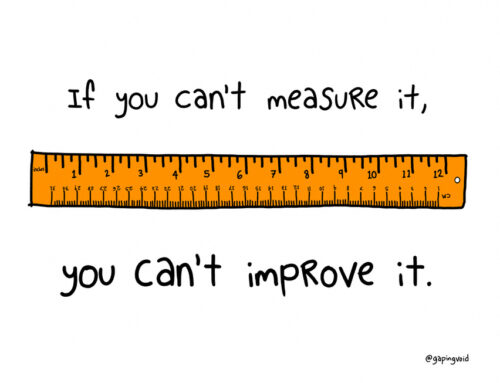7 Steps to Change Anything in Your Life
June 23, 2019
Categories: Change
People come to counseling for a variety of reasons, but the one constant is that they usually want to change something in their lives. Something about their life is not how they want it to be, and they have an idea that it could be different somehow.
If you think about any part of your life that is causing unhappiness or pain, the desire to change something is there. Some part of your life is not working, and you would like to change it. You want to shift something or make a course correction.
But when people try to change something, they often get stuck. Something happens, and for whatever reason, it doesn’t work. So, they go to counseling. Or attend a 12-step group. Or buy a self-help book. Many times, these strategies help. Sometimes they don’t, and the person remains stuck.
How People Change
As a psychologist and professor, I think about change a lot. I’ve studied how people make changes in their own lives, both in the context of therapy and outside of it. I’ve experimented with changing things in my own life. Sometimes these efforts have led to huge results, like the time I lost 60 pounds in 6 months and finally got in shape for good. Or how I worked through my struggles with anxiety. Some things have been more of a struggle, like my difficulties with perfectionism and acceptance. I’m a work in progress. I continue to grow and experiment.
One thing I have found, based in my research, clinical work, and personal experience, is that people who successfully make a change in their lives often go through a series of steps. Some of these steps might not be on your radar, but trust me, they are important. Think about the area of your life where you are experiencing the most pain and struggle. Work through the steps, and see what comes up for you.
Step 1: Decide What You Want
The first step is to get a clear picture of what you want. This is incredibly important, but a lot of folks skip this first step. They think they know what they want, but often they don’t. Getting clear on your want is important because your want is the motivation. Changing anything is hard work, and it takes a lot of time and effort. If you aren’t clear on what you want, you will lose your motivation when the going gets tough (and it will). Get a clear picture in your head of what you want. If you woke up tomorrow morning and your problem was solved, what would your life look like? How would you feel? How would you think? What would you do? Make sure you keep your want in front of you as you work through the other steps. It’s critical to remember why you are doing what you are doing.
Step 2: Take Responsibility
The second step is to take responsibility for getting what you want. A lot of people blame other people or outside circumstances for their problems. In a way, this makes us feel better. If it’s someone else’s fault, I don’t feel as bad about my own life and situation. Unfortunately, blaming others for our problems robs us of our power and keeps us stuck. If my problem really is someone else’s fault, then I don’t have any power to change my situation. I’m stuck. The key change is to take 100% responsibility for ourselves and our situation. Even if something bad happened to us in the past, now we can choose to be 100% responsible for our situation. We can do something different. All successful change starts from a place of total responsibility.
Step 3: Assess Where You Are Right Now
The third step is assessment. It’s important to be completely honest about where you are at right now, even if that realization is painful. How will you know where to go, if you don’t know where you are? Also, research has found that a thorough assessment can help jump-start your change. If you write down everything that you eat for a week, you might find that you begin to make more thoughtful choices about your food. It’s critical to take a baseline assessment of where you are at right now.
Step 4: Learn the Basics
For every area of life, there is a basic strategy for change and improvement. You aren’t the first person who has wanted to lose weight, or take control of your personal finances. You don’t need to reinvent the wheel or figure everything out on your own. Get some information about the area of life you are trying to improve. Read books, take a class, or hire a coach. Get as much information as you can, and get a basic plan together for improvement. Get a clear sense about what the steps are that will take you from where you are right now to where you want to go.
Step 5: Start Small
When they decide to make a change, many people bite off more than they can chew. This can lead to failure, discouragement, and quitting. Instead, start small, with something you know you can do. Once you get some success under your belt, increase slowly over time. For example, if you want to run a half-marathon, but haven’t run before, don’t go out and try to run 5 miles. That’s too much too soon! Instead, go out and run for 5 minutes. Do that a few times, and then increase to 6 minutes. Start small, and improve slowly over time. Remember, life is a marathon, not a sprint. You want to develop habits that you can do consistently and build on over time.
Step 6: Navigate Blocks
Sometimes things come up that block our progress. We might get injured, for example. Or perhaps there’s a voice in our head that tells us we can’t do it, or aren’t good enough. We might lose our motivation over time. When we experience a block, it’s important to press the pause button and reflect on what is getting in the way. When you move forward toward what you want, what happens? What is the message of the block? What does the block tell you about yourself? Next comes the critical question: What needs to happen for you to navigate this block? Maybe you need to tell yourself a more empowering story. Maybe you need to get up off your butt and do something even if you don’t feel like it. Maybe you need more help and support. Blocks are normal, but we need to analyze them and figure out how to navigate around them.
Step 7: Stay Consistent
People often want quick fixes, but this usually isn’t realistic. The reality is that lasting change often takes a long time. One research study found that it took people about 66 days of consistent behavior before the behavior felt like a habit. Setbacks are more common than we would like to admit. Sometimes it feels like the change process is two steps forward and one step backward. The key is to stay consistent. Keep your eye on the prize—your want—and keep moving forward. Consistent effort day in and day out leads to success.
Discussion
What do you think of the 7 steps for change? In your own change efforts, where do you tend to get stuck?

Related Thoughts
No Comments
Leave A Comment

Subscribe To My Newsletter
Join my mailing list to receive the latest blog posts.
Receive my e-book “The Mental Health Toolkit” for free when you subscribe.






[…] it. Admittedly, I’m one of those “self-help nerds” who is super-interested in how people make positive changes in their lives. In the documentary, you get an in-depth look at one of Tony’s week-long “Date […]